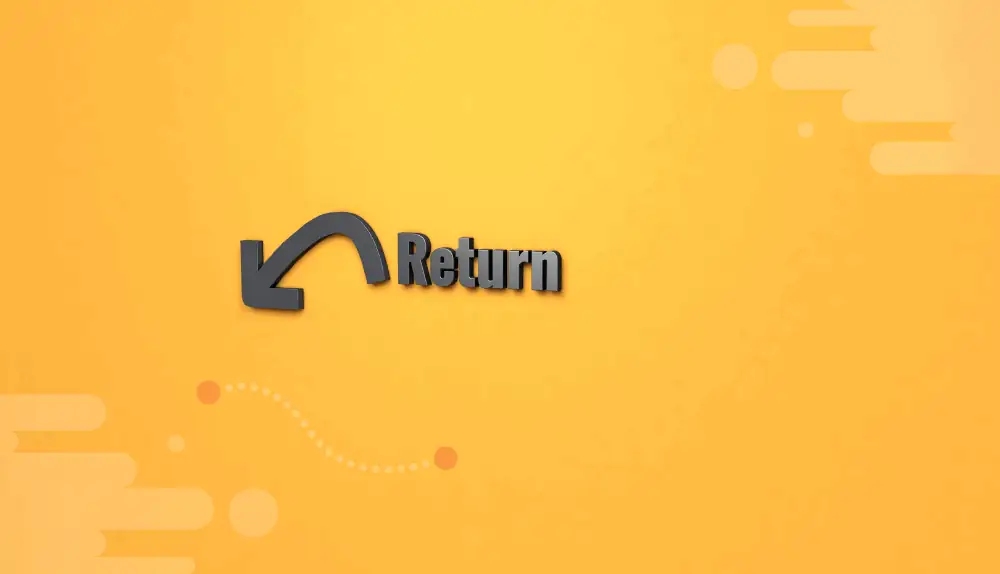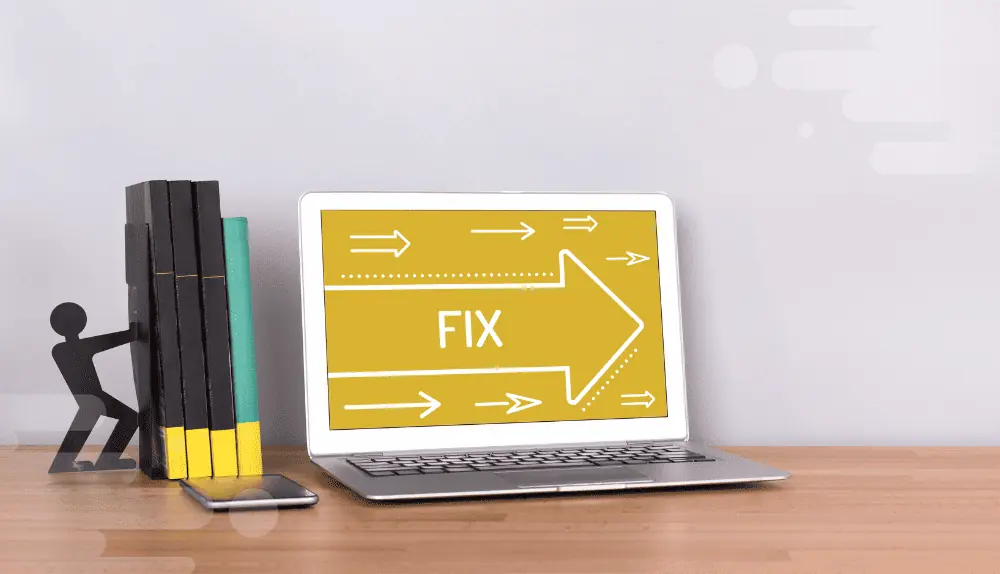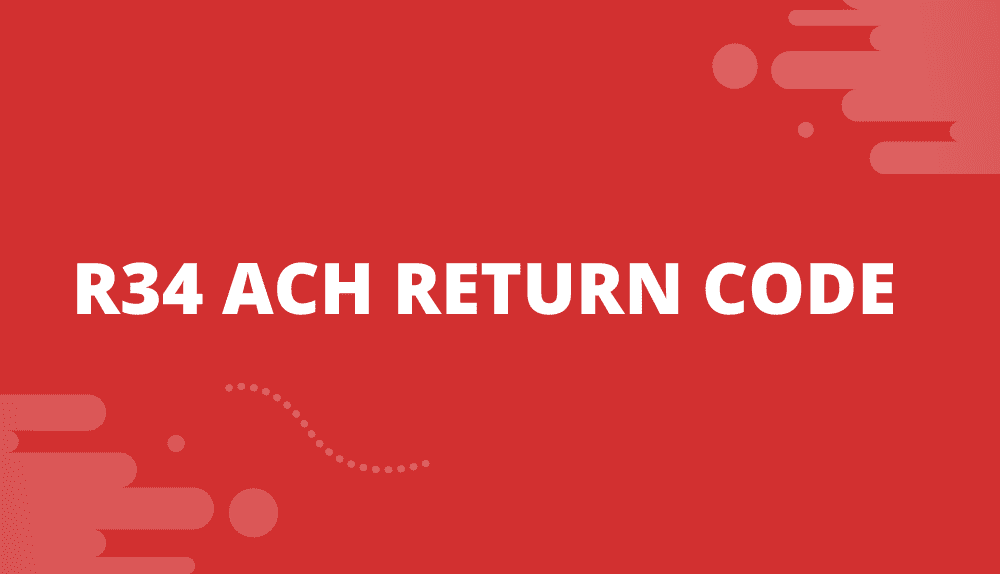In the intricate world of financial transactions, where dollars crisscross the globe with incredible speed, a symphony of codes orchestrates each movement. One such enigmatic code, shrouded in mystery yet holding immense significance, is the enigmatic R34 ACH Return Code: Limited Participation DFI. Like a well-guarded secret whispered among financial institutions, this code plays a pivotal role in the Automated Clearing House (ACH) network, where it reveals the tale of a Limited Participation Depositary Financial Institution (DFI).
Unraveling its meaning and implications unveils a fascinating glimpse into the inner workings of the financial ecosystem, where understanding the enigmatic R34 opens the gateway to decoding the dynamic dance of dollars and data. Step with us now into the realm of this cryptic code as we demystify the journey of transactions, ACH networks, and the role of Limited Participation DFIs in this captivating financial saga.
What Does R34 ACH Return Code Mean?
The ACH R34 Return Code refers to a specific response within the Automated Clearing House (ACH) network, designed to indicate a Limited Participation Depositary Financial Institution (DFI). When an ACH transaction encounters an issue during processing, such as insufficient funds or an invalid account number, the receiving bank, which is the Limited Participation DFI in this case, may return the transaction using the R34 code. Essentially, this code signifies that the receiving bank is only a partial participant in the ACH network and is unable to process the transaction for some reason.
The R34 Return Code carries essential implications for both the originator and receiver of the ACH transaction. For the originator, it serves as an alert that the intended recipient’s bank is limited in its ACH capabilities and may have specific restrictions or conditions governing electronic transactions. Consequently, the originator needs to be cautious and may need to explore alternative payment methods or reach out to the recipient to resolve the issue.
On the other hand, for the receiver, the R34 code underscores the need to address and rectify the underlying problem that caused the return. It could be due to an account discrepancy, insufficient funds, or other account-related issues. Resolving these issues is crucial for smooth ACH processing in the future.
Overall, the ACH R34 Return Code acts as an essential communication tool in the ACH network, notifying parties involved about a Limited Participation DFI’s inability to process a transaction and prompting them to take appropriate actions to ensure successful electronic fund transfers in the future.
Reasons ACH R34 Return Code Can Occur

The ACH R34 Return Code is a significant indicator that highlights a Limited Participation Depositary Financial Institution’s (DFI) involvement in the Automated Clearing House (ACH) network. When an ACH transaction encounters complications during processing, the receiving bank may use the R34 code to return the transaction. Several reasons can lead to the occurrence of the ACH R34 Return Code, each of which requires attention and resolution to ensure smooth electronic fund transfers.
Insufficient Funds
One of the most common reasons for an ACH R34 Return Code is insufficient funds in the recipient’s account. When the ACH transaction is initiated, the receiving bank attempts to process it, but if the account balance is inadequate to cover the transaction amount, the R34 code is applied. To avoid this situation, it is essential for account holders to ensure they have sufficient funds before authorizing any ACH transactions.
Account Number Errors
Another frequent cause of the ACH R34 Return Code is errors in the account number provided by the originator. If the account number does not match the recipient’s account information, the transaction cannot be completed, leading to its return with the R34 code. This underscores the importance of verifying and double-checking account details before initiating ACH transfers.
Invalid Account Type
Certain accounts, such as savings accounts or brokerage accounts, may have restrictions on ACH transactions or may not be eligible to receive certain types of ACH transfers. If an ACH payment is attempted to be made to an account type that does not permit such transactions, the receiving bank will return the transaction using the R34 code.
Closed or Frozen Accounts
If the recipient’s account has been closed or is under freeze status at the time of the ACH transaction, the receiving bank will return the payment with the R34 code. It is crucial for recipients to keep track of their account status to avoid this situation.
Restricted ACH Participation
As the name suggests, the ACH R34 code may occur when a financial institution has limited participation in the ACH network. Limited Participation DFIs might only process certain types of ACH transactions or have specific processing schedules, leading to the return of transactions that do not meet their criteria.
Processing Window Missed
The ACH network operates on specific processing windows. If an ACH transaction arrives outside the designated processing time, the receiving bank might return it using the R34 code. It is crucial for originators to be aware of the processing schedules of the receiving bank to ensure timely transactions.
Overall, the ACH R34 Return Code can occur due to various reasons, ranging from insufficient funds and account errors to restricted participation and missed processing windows. To prevent the occurrence of this code and ensure successful ACH transactions, both originators and recipients must pay close attention to account details, transaction timing, and the specific ACH capabilities of the receiving financial institution. Addressing these issues promptly will facilitate seamless electronic fund transfers and promote efficient financial interactions within the ACH network.
Steps to Fix ACH R34 Return Code

Fixing the ACH R34 Return Code requires a systematic approach that involves communication, verification, and resolution between the parties involved in the failed transaction. To successfully address the issues that caused the return, follow these essential steps:
Verify Transaction Details
The first step is to carefully review the details of the ACH transaction that received the R34 Return Code. Double-check the account number, account type, and transaction amount to ensure accuracy. If the transaction details are incorrect, correct them before attempting to resend the payment.
Check Account Balance
If the R34 code resulted from insufficient funds in the recipient’s account, the recipient should verify their account balance to ensure that it is sufficient to cover the ACH transaction amount. If the funds are inadequate, the recipient should consider depositing enough funds to avoid future issues.
Coordinate with the Receiving Bank
Contact the recipient’s bank or the Limited Participation DFI that returned the ACH transaction with the R34 code. Seek clarification on the reason for the return and inquire about any specific requirements or restrictions on ACH transactions for that account. Understanding the receiving bank’s policies will help ensure future transactions meet their criteria.
Rectify Account Issues
If the recipient’s account is closed, frozen, or has other issues that caused the return, work with the bank to resolve these problems promptly. The recipient may need to reactivate their account or address any issues affecting its status.
Verify ACH Participation
If the receiving bank is a Limited Participation DFI, confirm whether they can process the specific type of ACH transaction being initiated. If not, explore alternative payment methods or contact the recipient to discuss other suitable options.
Reschedule Timing
Ensure that the ACH transaction is initiated within the designated processing window of the receiving bank to avoid a return due to missed processing time.
Monitor Future Transactions
After implementing the necessary fixes, closely monitor subsequent ACH transactions to confirm their successful processing. Keep communication lines open with the receiving bank to address any potential issues promptly.
Consider Alternative Payment Methods
In case the ACH R34 Return Code persists despite efforts to resolve the issue, consider using alternative payment methods such as wire transfers, paper checks, or electronic wallets, depending on the recipient’s preferences and payment capabilities.
Overall, fixing the ACH R34 Return Code involves thorough verification of transaction details, coordination with the receiving bank, and resolving any issues affecting the recipient’s account or ACH participation. By following these steps and maintaining effective communication, parties can resolve ACH return issues and facilitate successful electronic fund transfers in the future.
How Can Businesses Deal with ACH R34 Return Code
Dealing with the ACH R34 Return Code can be a challenging but essential task for businesses that rely on the Automated Clearing House (ACH) network for electronic fund transfers. To effectively manage ACH returns and prevent them from becoming a recurring issue, businesses can take the following steps:
Error Prevention and Verification
Prioritize accuracy during the ACH transaction initiation process. Double-check all transaction details, including account numbers, account types, and transaction amounts, before submitting the ACH payment. Implement validation checks in your payment system to catch potential errors before they lead to ACH returns.
Maintain Sufficient Funds
Ensure that your business’s account has enough funds to cover all ACH transactions. Regularly monitor your account balances and cash flow to prevent the occurrence of the ACH R34 Return Code due to insufficient funds.
Understand Receiving Bank’s Policies
If your business frequently makes payments to specific recipients, such as vendors or suppliers, familiarize yourself with the receiving bank’s policies regarding ACH transactions. Know if they are a Limited Participation DFI and if they have any specific requirements or restrictions on ACH payments. Adjust your payment processes accordingly to comply with their guidelines.
Communication with Recipients
Establish open lines of communication with your recipients. In the event of an ACH return, promptly reach out to the recipient to identify the cause of the return and work together to resolve any underlying issues.
Monitor ACH Returns
Closely monitor ACH returns and keep track of the return codes received. Analyze the reasons behind the returns to identify patterns or recurring issues. This information can help you identify areas for improvement and implement necessary changes to minimize future ACH return incidents.
Consider Alternate Payment Methods
In cases where the ACH R34 Return Code becomes a persistent issue, consider using alternative payment methods. Depending on the circumstances, wire transfers, paper checks, or electronic wallets may be viable alternatives that can ensure successful fund transfers.
Partner with a Reliable Payment Processor
If your business frequently deals with ACH transactions, consider partnering with a reliable payment processor. Reputable payment processors can help streamline ACH payments, reduce errors, and handle any ACH returns efficiently.
Stay Updated on ACH Rules and Regulations
Stay informed about the latest ACH rules and regulations. Familiarize yourself with the National Automated Clearing House Association (NACHA) Operating Rules to ensure compliance and improve the accuracy of ACH transactions.
By proactively addressing ACH R34 Return Code issues and implementing measures to prevent their recurrence, businesses can optimize their ACH payment processes and build stronger relationships with their recipients and financial institutions.
Final Words
In conclusion, the ACH R34 Return Code plays a significant role in the world of electronic fund transfers, signaling the involvement of a Limited Participation Depositary Financial Institution (DFI) within the Automated Clearing House (ACH) network. Understanding the reasons behind the occurrence of the ACH R34 Return Code and implementing effective solutions is crucial for businesses and individuals alike.
By verifying transaction details, maintaining sufficient funds, and coordinating with receiving banks, businesses can proactively address ACH returns and foster smoother payment processes. Additionally, staying informed about ACH rules and regulations and considering alternative payment methods can further enhance the efficiency and reliability of electronic fund transfers.
Embracing these strategies empowers businesses to navigate the complexities of the ACH network successfully, enabling seamless transactions and reinforcing their financial stability in an increasingly digital world. As businesses adapt to the ever-evolving landscape of electronic payments, a proactive approach to managing the ACH R34 Return Code will prove instrumental in ensuring efficient and secure financial interactions within the ACH network.
Frequently Asked Questions (FAQs)
Why did my ACH transaction receive the R34 Return Code?
The ACH R34 Return Code can occur due to various reasons, such as insufficient funds in the recipient’s account, errors in the account number provided by the sender, restricted ACH participation of the receiving bank, closed or frozen accounts, and missing the designated processing window.
How can I fix the ACH R34 Return Code issue?
To resolve the ACH R34 Return Code, you should verify transaction details for accuracy, ensure sufficient funds in the recipient’s account, coordinate with the receiving bank to understand their ACH capabilities and rectify any issues affecting the account’s status or ACH participation.
Can I resend the ACH transaction after receiving the R34 Return Code?
Yes, you can resend the ACH transaction after addressing the issues that caused the return. However, it is essential to verify and correct any errors to avoid encountering the R34 code again.
What are the implications of the ACH R34 Return Code for my business?
The ACH R34 Return Code can have several implications for businesses, including delays in payments, potential fees for returned transactions, and disruptions in financial transactions with the affected recipient. It underscores the importance of accurate transaction processing and communication with recipients.
How can I prevent the ACH R34 Return Code from occurring in the future?
To prevent the ACH R34 Return Code, businesses should implement error prevention measures, maintain sufficient account balances, verify recipient account details before initiating ACH transactions, and be aware of the ACH capabilities and policies of receiving banks.
How long does it take to resolve an ACH return issue?
The time it takes to resolve an ACH return issue can vary depending on the specific cause and the responsiveness of the parties involved. Prompt communication and collaboration with the receiving bank and the recipient can expedite the resolution process.

